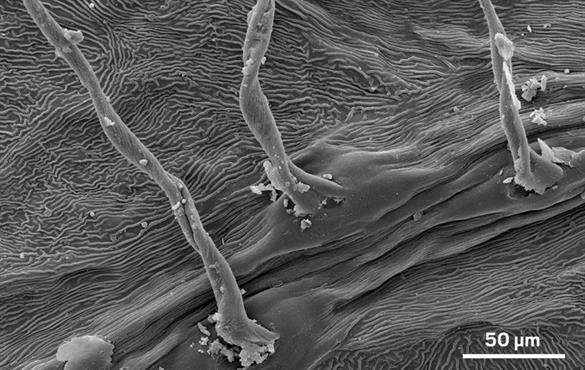In the media: Some types of trees excel at removing particles from polluted air
Wind tunnel studies suggest that silver birch and certain other tree species may be better than others at trapping roadside air pollution

Air pollution from diesel exhaust, brake dust, and other particles thrust into the air by cars on multilane highways has measurable effects on health—increasing the risk of asthma, heart disease, and other conditions. To try and trap that particulate matter, researchers have begun looking to trees. In a new study, scientists have found that certain tree species have leaves with features that make them good, albeit temporary, air filters for ultrafine particles, the smallest and most health-damaging class of particles with diameters less than 100 nm (Environ. Sci. Technol. 2019, DOI: 10.1021/acs.est.8b06629).
Barbara A. Maher of the University of Lancaster and her colleagues have been looking at whether trees might help mitigate the influence of ultrafine particles on health. Earlier research from her lab had shown that silver birch trees were good at capturing particles larger than 1 µm. Now they wanted to know whether it would also nab ultrafine particles and whether other tree species could do the same job.
There was a huge range in particle-removal efficiency among the different species, with the best performing ones removing 70.5% (elder), 71.5% (yew), and 79% (silver birch) of the ultrafine particles. “At the microscale, the type of leaf—its structures and hairiness and leaflet size and topography—controls how efficient that leaf is in getting particles to deposit on the leaf’s surface,” Maher says. The furry leaves of a silver birch or the many small leaves of a yew contain more surface area, increasing the chance a particle will bump into it.
The measured efficiencies of the best performing species were four times as high as what earlier airflow modeling studies have suggested was possible. But those models haven’t taken species-specific differences into account.




